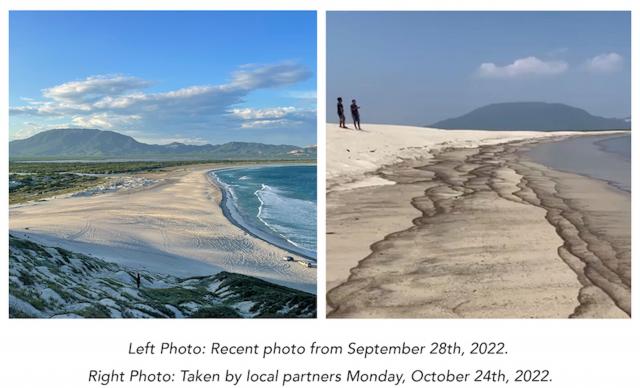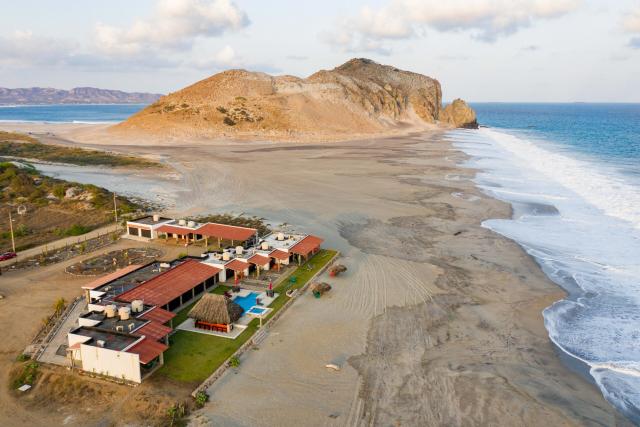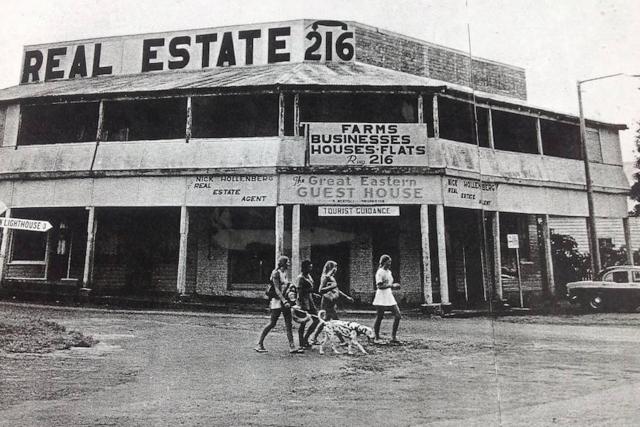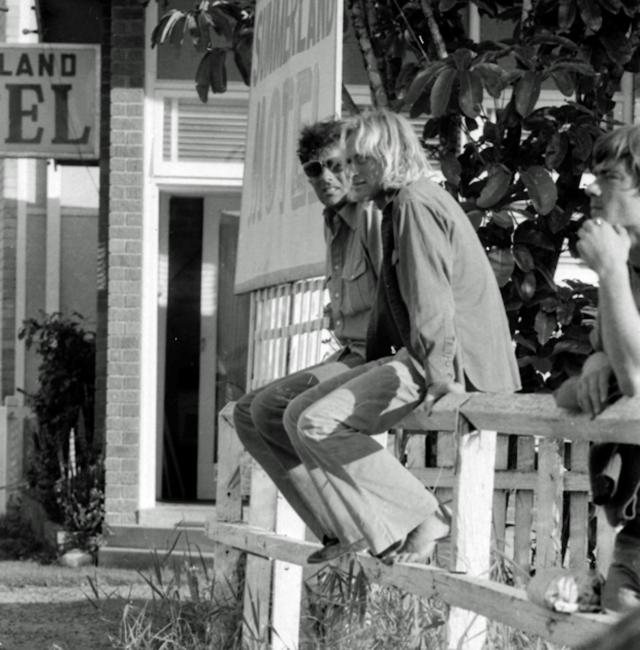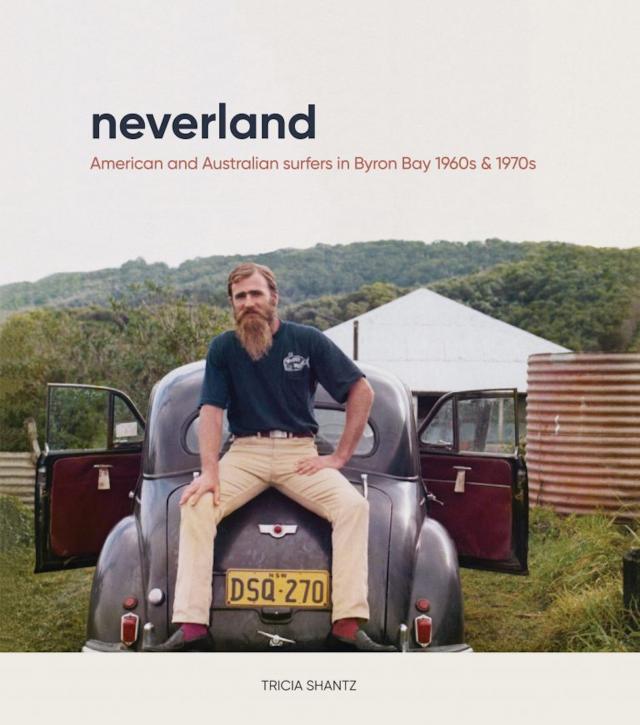Any oceanic oil spill is disastrous, but let’s be honest, when it occurs on some unfamiliar coast a long way away, it’s hard to stay animated about it for long.
So when news of a massive spill near the port of Salina Cruz in the Mexican province of Oaxaca began leaking out (no pun intended) in the last week of October, it didn’t exactly make headline news in Australia.
But here’s something that might sheet it home.
Do you remember the hugely entertaining short video called Free Scrubber that Rip Curl released last year, featuring the extraordinary Tom Curren and his mate Buggs Arico hanging out at one of those dreamy Mexican Pacific point breaks, surfing, playing music, cracking wise over a beer and generally avoiding the rigours of the pandemic?
Well, they were hanging out at Punta Conejo, where Buggs has a surf camp, and which is on the stretch of Oaxacan coast most devastated by the Salina Cruz spill.
According to MexicoDailyPost.com, the online English language news site, the huge spill was caused by gasoline thieves trying to load up tankers at night and missing their mark. The worst-affected areas are expected to take six months to clean up, with devastating consequences for marine and coastal wildlife.
Save The Waves Coalition, the governing body of Noosa World Surfing Reserve and all other WSRs, announced on 26 October: “On Sunday 23 October, fishermen, surfers, and conservation groups denounced the presence of oil and hydrocarbons on different beaches near the Port of Salina Cruz, Oaxaca as an ecological disaster. The initial oil spill extended approximately 10 kilometres, reaching Playa Brasil, Playa Azul, and Playa Guelaguichi, affecting the region’s fauna, tourism, and fishing activities.”
But the same day Gino Passalacqua, an oceanographer and scientific adviser to Save The Waves, reported: “We have confirmed reports that the crude has reached Playa La Bamba, 25 kilometres away from the spill source. Birds covered in oil were found in Bahías de Huatulco and Morro Ayuta, 105 and 68 kilometres away from the source of the spill. The exact volume of oil spilled and the impacted area remains unknown.
“Playa Brasil, Playa Azul, Playa Guelaguichi, and Salinas del Marqués wetland are located within the Gulf of Tehuantepec, which is considered one of the centres of biological activity of the Mexican Pacific Coast. These coastal ecosystems not only provide habitat for endemic and vulnerable species, but are also economically vital areas for the local fishermen. Surf tourism also provides a sustainable income source for nearby communities. Both local economies are now jeopardised.”
In response to this situation, petroleum company PEMEX, which owns the spill site, hired fishermen and residents of Playa Brasil, Playa Azul, and Salinas del Marqués to start cleaning up the oil.
In the meantime, fishing activities and extraction of mollusks were suspended. Save The Waves doesn’t think this is enough, issuing in another statement:
“The protection of Punta Conejo and the surrounding habitats is of the utmost importance to avoid the destruction of the ecosystem and the deterioration of local livelihoods.
“Save The Waves has been working with the community of Playa Brasil to propose a conservation project that guarantees the protection of biodiversity, the ecosystem, and the economies that depend on it.
“This recent event highlights the importance of protecting this surf ecosystem and how large-scale industrial projects could negatively impact the region. Through a stakeholder coalition, Save The Waves has developed a strategic campaign plan to create a protected area around Punta Conejo. Our goal is to designate this ecosystem as an internationally recognised and legally protected site to prevent the destruction of the ecosystem due to proposed plans for an industrial port adjacent to the breaking wave.”
Good on you, Save The Waves! At the time of writing, damage reports from the area seemed to have dried up. Let’s hope the oil has too.
Neverland
A few people have had a crack at documenting Byron Bay’s colourful development as a surf town, but I doubt that anyone has done it as well as our friend Tricia Shantz, aka Mrs Rusty Miller.
Many in the local surfing community will know Tricia and Rusty from their many years of patronage of the Noosa Festival of Surfing – a true-blue surfing family whose love of our surf culture shines through everything they do.
And Neverland, whose title is taken from a hippy clothing shop of the early ‘70s, is no exception.
Since I haven’t had the opportunity yet to do anything but eyeball a borrowed copy very briefly, I’ll defer to Swellnet reviewer Steve Shearer, who noted: “Reading Neverland I wondered if anything could recreate those conditions again. A town in decline with opportunity going for a song. Geologically, culturally, historically, Byron has been a place of constant change. Climatic conditions were part of the last decline. Seventeen coast-hugging cyclones affected Byron in the two decades between ‘56 -’78, often destroying infrastructure like the second jetty… It would be perverse to dream of a storm-ravaged Byron Bay once again becoming available to a new generation of dreamers and surfers to rebuild and remake in their image – as the surfers of Neverland were able to do.
“Neverland is an insanely enjoyable, albeit bittersweet read.”
Perverse, Steve, but wouldn’t it be great to wash out the influencers and start again!
Full review coming up in a couple of weeks. Neverland is published by Surf Research and available online at rustymillersurf.com/product/neverland/


